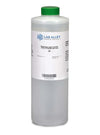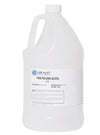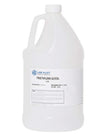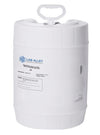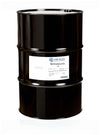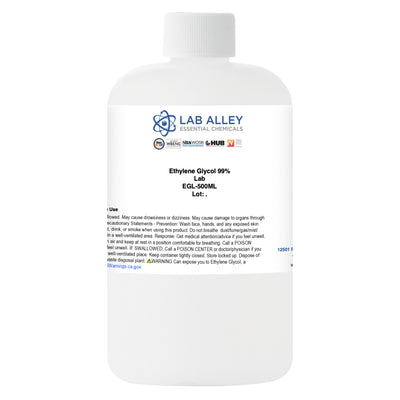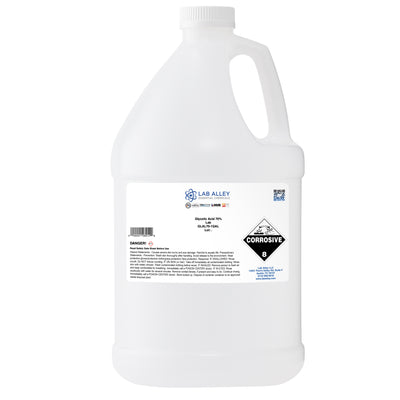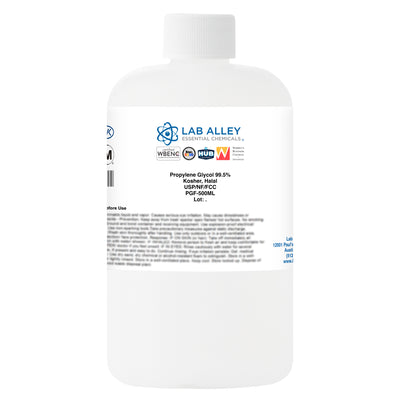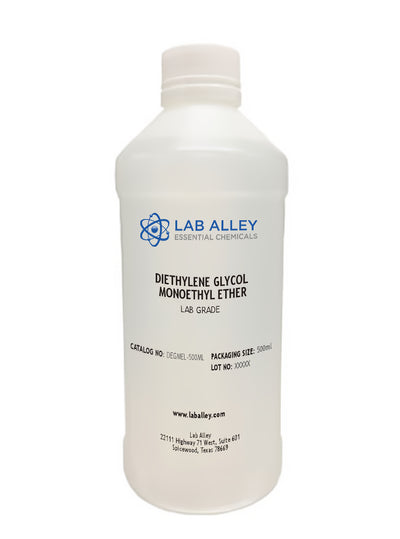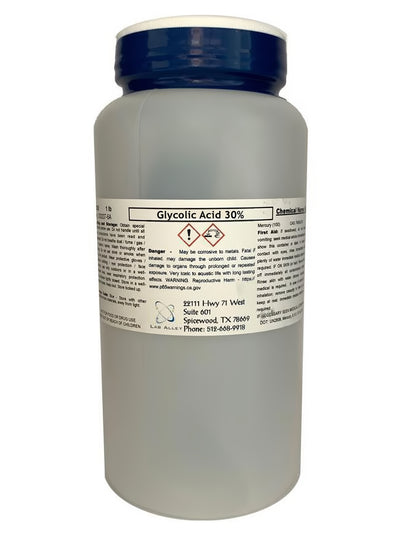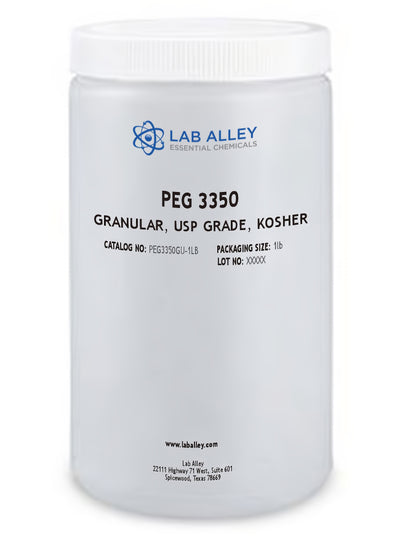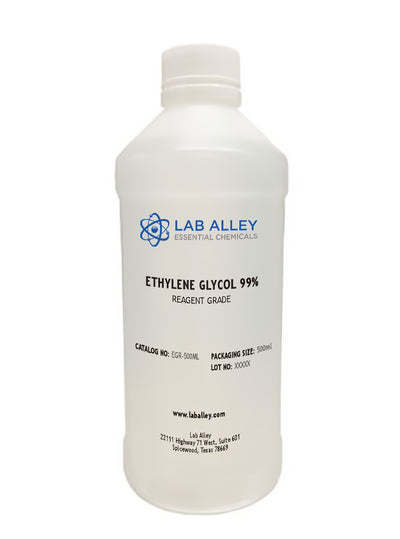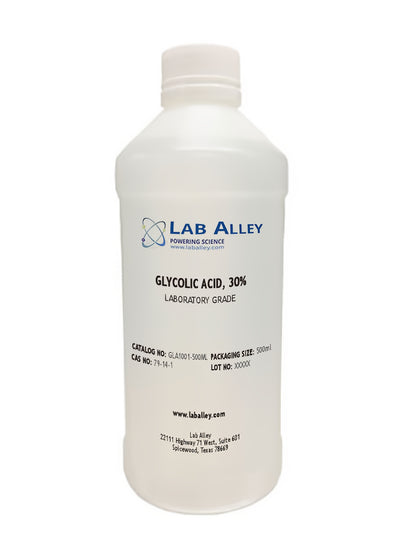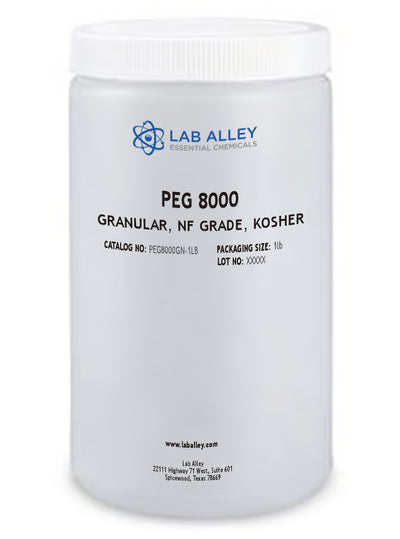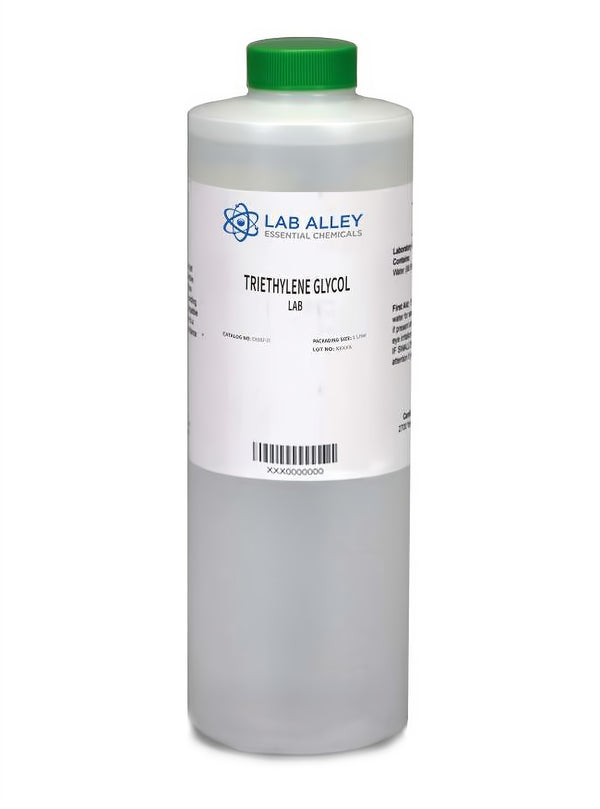
Business Support
Triethylene Glycol Lab Grade
For questions regarding lead time, please contact a member of our Customer Care Team at customercare@laballey.com
Business Support
Description
About Triethylene Glycol Lab Grade
Triethylene Glycol (TEG), also known as Triglycol, is a colorless, odorless viscous liquid. It is a poly (ethylene glycol) that is octane-1,8-diol with oxygen atoms replacing the carbon atoms at positions 3 and 6. It is a plasticizer that is mainly utilized in the production of vinyl polymers. It is also found in certain air sanitizers and also works as a disinfectant when aerosolized. Lab Grade chemicals are also known as Chemically pure or Laboratory reagents. Despite their reasonable purity, Lab Grade chemicals do not fulfill any recognized quality or purity criteria, such as the ACS Grade, the USP Grade, or the FCC Grade. Our Triethylene Glycol, Lab Grade, is available in a convenient packing of 4 Liter bottle for industrial, commercial, and educational institutes requiring bulk amount.
COMMON USES AND APPLICATIONS
- Coolant
- Solvent
INDUSTRIES
- Printing inks
- Synthesis of Dyes
- Brake fluids
- Artificial fog solution
PRODUCT INFORMATION
Customer Reviews and Q&A
Safety and Shipping
Very hazardous in case of eye contact (irritant), of ingestion. Slightly hazardous in case of inhalation. Inflammation of the eye is characterized by redness, watering, and itching. Potential Chronic Health Effects: Very hazardous in case of eye contact (irritant).
Business Support
Built for Business.
At Lab Alley, we simplify procurement with custom quotes, credit applications, tax exemptions, and fulfillment support, ensuring on-budget, on-time delivery - your success is our priority.
Apply for Credit
A Lab Alley credit account streamlines purchasing for your business. Our Customer Success Team is available to help you through every step of the process.
Request a Custom Quote
Get a fast, customized quote tailored to your specific needs. Our team ensures accurate pricing and availability to help streamline your purchasing process.

Additional Business Resources
Lab Alley provides access to essential certifications, documents, and other resources to support your business.

Create a Lab Alley Account

RECEIVE exclusive offers, promotions, and discounts on chemicals.

Always have the product you need, when you need it with our AUTOSHIP program.

